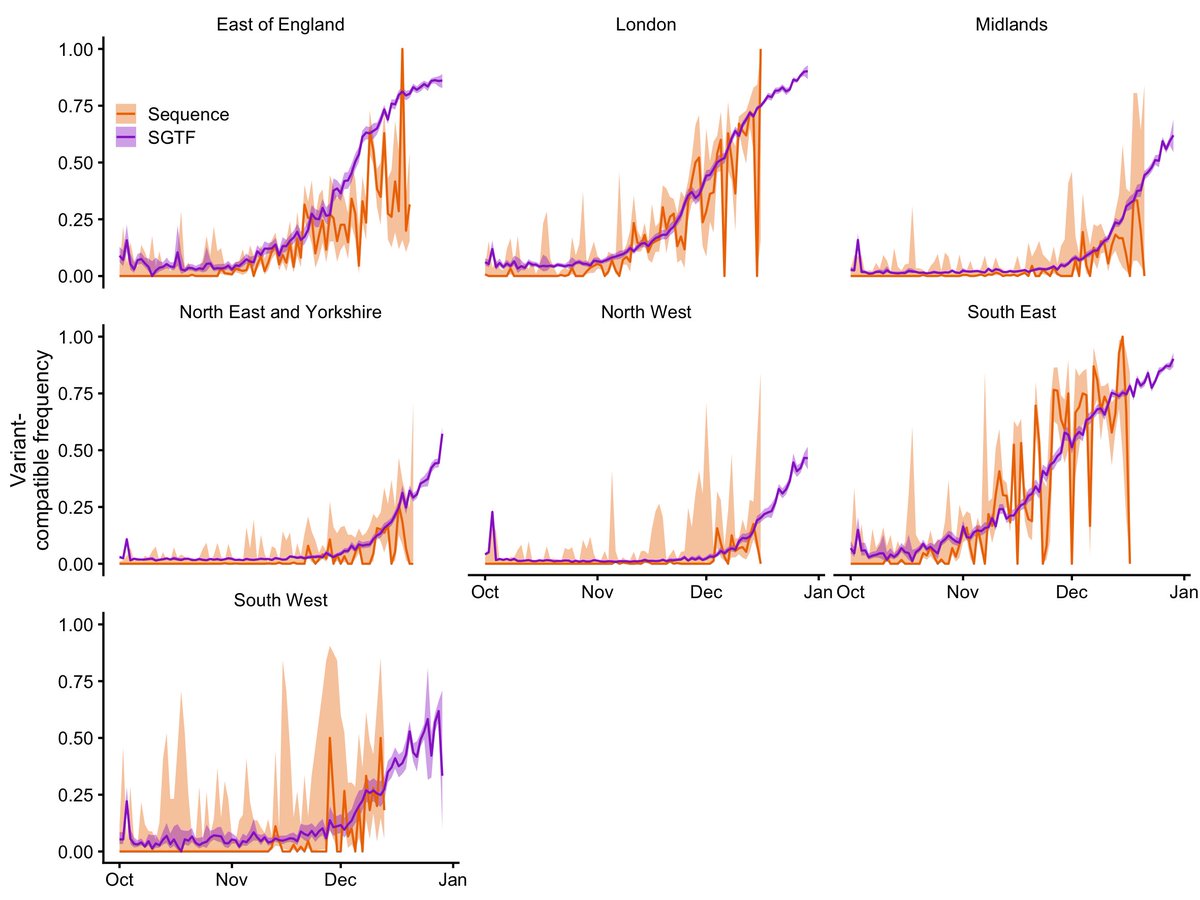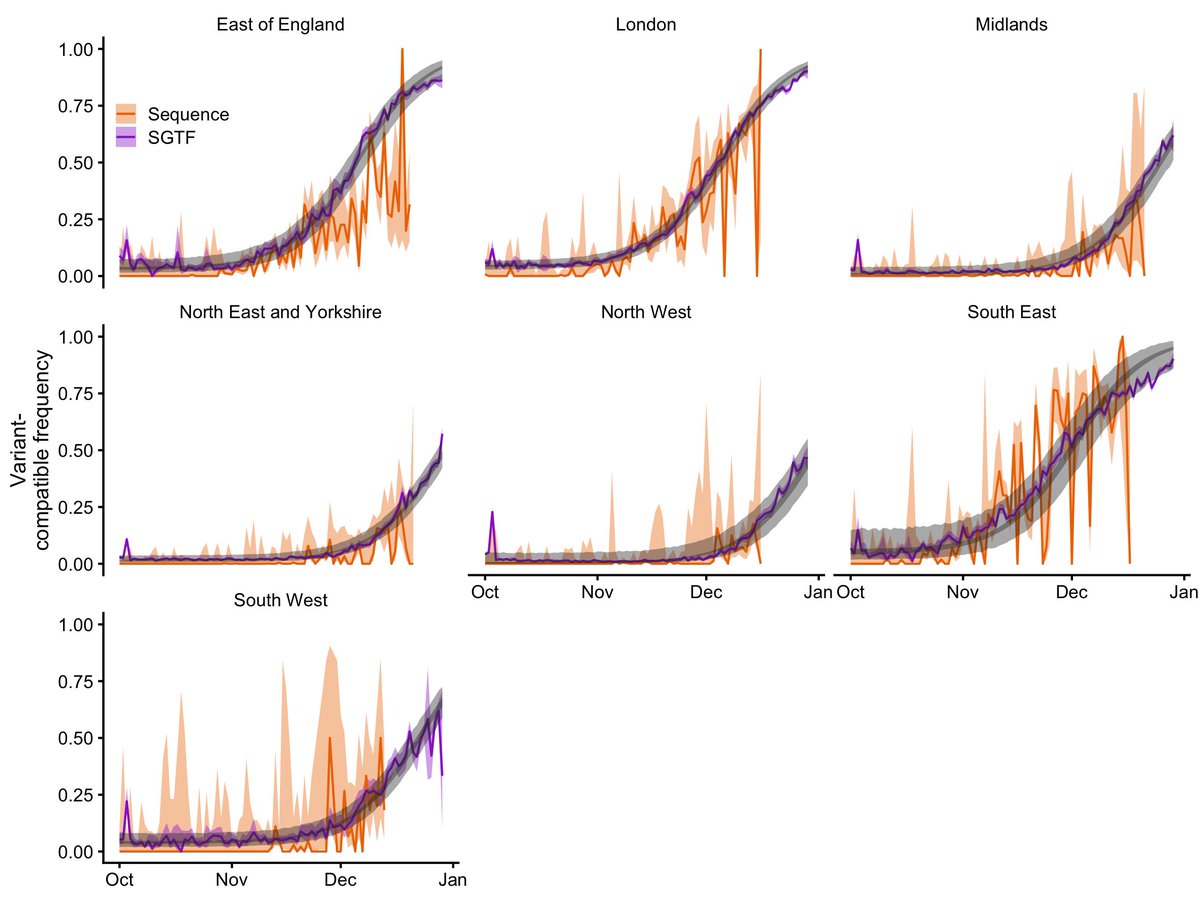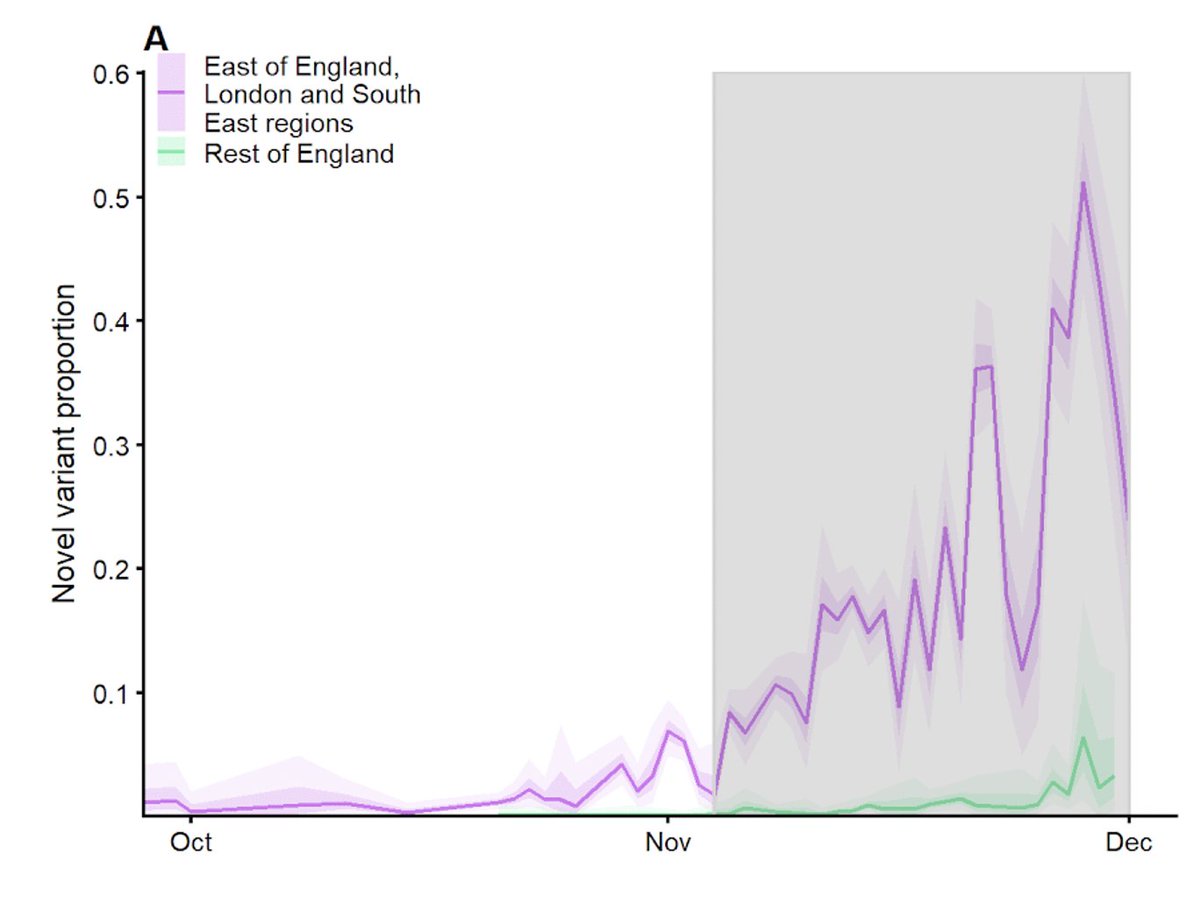
@i_petersen Thanks Irene. See image, sorry for bad labelling! Essentially the major pattern is that it doesn't seem to have spread into 80+ quite as quickly. Over November, 0-19s were slightly overrepresented but that seems to have somewhat settled out now. (1/2) 

@i_petersen UK scientists originally interpreted this as the variant spreading (slightly) more easily among children than preexisting variants. But with newer data now in, this may have just been a transient effect related to schools being open during the November lockdown. 2/2
@i_petersen I tried to fit way too much into one tweet here. Let me be a bit of a nerd and expand massively on this. First, by UK scientists I mean the scientists on SPI-M who I have been talking to about this, obviously I don't know what the general "UK scientist view" is. a/
@i_petersen Second, those scientists didn't all agree that there was definitely more transmission in children with VOC, then see this unexpected new data and change our minds. That happens sometimes, but there was disagreement from the start on how to interpret the November data. b/
@i_petersen Third, when I say disagreement I don't mean some people argue X and others argue Y. People may lean to one side or another, but I think most of us would say that at this point the data are a bit unclear and it could go either way. c/
@i_petersen So when we discuss uncertainties it's not always opposing camps, or strong beliefs falling down with new data. It's often discussing different hypotheses and what new data would be needed to clarify the answer, and in the meantime emphasizing that we're not sure. d/
• • •
Missing some Tweet in this thread? You can try to
force a refresh








